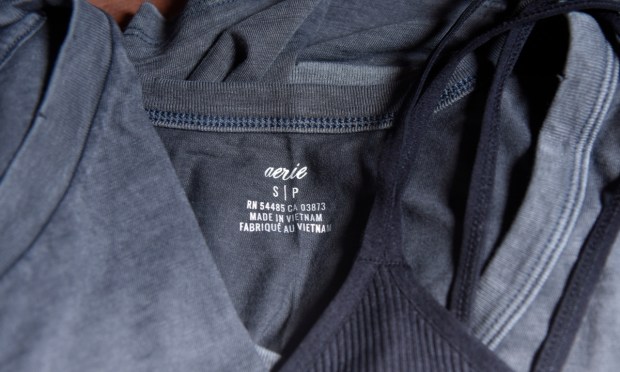American Eagle’s Aerie Looks to Localization to Drive Conversions

Personalization has become the norm, and retailers without this feature are considered obsolete and disconnected.
Yet when exploring personalization, many strategies come into play. One approach, embraced by numerous retailers, is localization. Brands localize to extend their influence from eCommerce into brick-and-mortar retail, or dial in with their established physical footprint.
Localization holds immense value for retailers. Tailoring products, services and experiences to the specific needs, preferences and cultural nuances of local markets plays a role in driving success.
For brands, localization is a potent tool to foster a deeper connection with consumers. By aligning products and messaging with the unique characteristics of a particular region, brands can cultivate a sense of familiarity and resonance. For retailers, localization allows them to curate their offerings to suit the preferences and purchasing behaviors of their local customer base.
A retailer aiming to connect with consumers on a community level is Aerie, a brand under the ownership of American Eagle Outfitters.
For the fall season, Aerie is introducing an advertising campaign. The centerpiece is the Aerie Hidden Gems Marketplace pop-up, at the Gansevoort Plaza in New York City, where the brand’s most comfortable items are showcased. The campaign hopes to attract new customers to their line of bras.
The Aerie Hidden Gems Marketplace will be open Aug. 15 from noon to 6 p.m. and has been designed with a strong community focus and will act as a hub for brand supporters and new customers.
In preparation for the NYC marketplace, the brand’s merchandising team has reportedly curated a collection of items from eight local establishments, including Kobrick Coffee Co., PopUp Bagels, and the floral boutique Brooklyn Blooms. In addition, Aerie’s “it list” items, like velour sets and Hold Up! Pocket Leggings, will be included.
Visitors to the marketplace will be able to experience these products firsthand and play interactive games with the chance to win prizes. New York represents the brand’s third-largest market based on sales data. This market also has strong in-store foot traffic, leading Aerie to give it priority and allocate resources.
Another retailer that has been looking to pursue localization is Foot Locker.
In May, Mary Dillon, the president and CEO of Foot Locker, highlighted the company’s “Lace Up” strategy. A component of the strategy is focusing on enlarging community-centered concept stores. These stores are expected to be placed in locations where sneaker enthusiasts tend to congregate, serving as a testing ground for localized initiatives.
See also: Foot Locker Reports Rough Q1 as It Readies New Formats, Loyalty and Omnichannel Strategy
However, for businesses operating solely online, BigCommerce has incorporated fresh localization capabilities into its software-as-a-service (SaaS) eCommerce platform. This empowers global merchants to customize their checkout process, merchandising techniques, language usage and content to cater to local preferences.
“Language, currency and cultural differences should not be barriers to commerce, and now they don’t have to be,” BigCommerce Senior Vice President of Product Troy Cox said at the time of the announcement. “These new enhancements extend our [multi-storefront (MSF)] functionality so that merchants have even more flexibility to grow their brands and global footprints through one powerful BigCommerce dashboard.”
The latest international improvements for MSF by BigCommerce will customize all content, promotions and search engine optimization tactics for each individual storefront. It will also adapt the language, payment methods, currency, tax structure, and shipping choices to suit local preferences.
See also: BigCommerce Adds Localization Features to Multi-Storefront Platform

